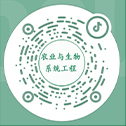西双版纳橡胶林面积遥感监测和时空变化
Area monitoring by remote sensing and spatiotemporal variation of rubber plantations in Xishuangbanna
-
摘要: 旨在利用遥感手段监测橡胶林种植面积,探讨橡胶林的林龄划分方法,揭示橡胶林时空格局变化规律,为认识橡胶林的林龄结构、空间扩展模式和理解区域土地利用变化及其生态环境效应提供科学基础。该文基于RS和GIS技术,研究了西双版纳地区橡胶林的生长过程,并提出了基于橡胶林从种植到生长过程的归一化植被指数(NDVI,normalized difference vegetation index)时间序列变化,判断橡胶林的林龄阶段的方法。并进一步从种植面积、空间分布、林龄结构、地类转变关系4个方面,探讨了西双版纳地区1990-2014年橡胶林的时空变化。研究发现:西双版纳橡胶林按年龄阶段可划分为橡胶幼林(0~5 a)、橡胶成林(>5~13 a)、橡胶老林 (>13 a);1990-2014年,橡胶林种植面积总体上呈增加趋势,橡胶林的林龄结构有所变化。1990年橡胶林空间分布从中心到外围为老林-幼林/成林,2000年变为老林-成林-幼林,2010年和2014年为幼林-老林-成林且这一趋势更为明显;西双版纳自然保护区橡胶林种植面积和种植密度远远低于非自然保护区。橡胶林扩张以侵占天然林为代价,热带季雨林是受橡胶林扩张干扰最强烈的天然林。该研究以2月下旬-4月中旬为提取橡胶林的时间窗口,利用逐旬的归一化植被指数、土壤亮度指数、土壤湿度指数、近红外反射率变化特征提取橡胶林空间分布信息效果较好。此外,基于NDVI阈值的橡胶林林龄阶段判别方法,也具有一定的普适性。Abstract: Abstract: As one of the major commercial crops in Xishuangbanna, Southwest region of China, rubber plantations have been expanding rapidly in the recent decade, which mainly occupied agricultural lands and secondary forest covers. These land use and land cover changes have negative influences on regional ecosystem and ecological processes. Based on the RS and GIS technology, the growth process of rubber plantations in Xishuangbanna was explored in this article and a method of judging the forest age of rubber plantations was put forward in the study area. Firstly, by using the multi-temporal Landsat images (16-days interval from January to April in 2014), time series changes of NDVI, NIR, Bright and Wetness of rubber plantations and other vegetation covers were constructed. It was found that the period from late February to mid-April was the optimal time for extracting rubber plantations. NDVI and NIR had better effects on the discrimination of rubber plantations and other vegetations. Then, annual Landsat images were used to construct NDVI time series changes of newly planted rubber trees and mature rubber trees, and determine the NDVI thresholds of each growth periods of rubber plantations. Because of the limitation of accessibility of annual Landsat images, only data of 14 consecutive years (2000-2014) were collected in this research. Each age stage of the rubber plantations was judged by these ways. Finally, from the planting area, the spatial distribution, the structure of forest age and the conversion of land use types between the rubber plantations and nature forest, the spatiotemporal changes of rubber plantations in Xishuangbanna during1990-2014 were studied. The results showed that: 1) Rubber plantations in Xishuangbanna can be divided into three classes based on different forest ages: young rubber plantations with forest age ranging from 0 to 5 years; mature rubber plantations with forest age ranging from >5 to 13 years; old rubber plantations with forest age above or equal to 13 years. 2) During 1990-2014, the area of rubber plantations increased, young mature and old rubber plantations converted from each other, the average area and density of rubber plantations in the nature reserves was far below that in the non nature reserves in Xishuangbanna. 3) From spatial center to the periphery, the spatial distributions of the rubber plantations in 1990 were from old rubber plantations to mature or young rubber plantations, in 2000 were from old rubber plantations to mature rubber plantations, then to young rubber plantations, in 2010 and 2014 were both from young rubber plantations to old rubber plantations, then to mature rubber plantations. This trend was more evident in 2014 than 2010. 4) The expansion of rubber plantations occupied the nature forests in Xishuangbanna. The conversion between the rubber plantation and natural forests in altitude from 0 to 800 m was most intense, followed by which in altitude from 800 to 1 000 m, and the competition in altitude above 1 000 m was the weakest. Tropical monsoon forest was most intensively interfered by rubber plantation expansion in natural forest.
-
Keywords:
- remote sensing /
- monitoring /
- rubber plantations /
- forest age range /
- spatiotemporal change /
- Xishuangbanna
-
-
[1] FAO, 2000. Global forest resource assessment 2000 [R/OL].2000[2014-12-03].http://www.fao.org/3/contents/ f07d0c3d-1070-5124-8019-04c1dac150ae/Y1997E00.HTM [2] FAO, 2010. Global forest resources assessment 2010 [R/OL]. 2010-10[2014-12-3]. http://www.docin.com/ p-270246422.html [3] Ziegler A D, Fox J M, Xu J. The rubber juggernaut[J]. Science, 2009, 324(5930): 1024-1025. [4] Li H, Aide T M, Ma Y, et al. Demand for rubber is causing the loss of high diversity rain forest in SW China[J]. Biodiversity and Conservation, 2007, 16(6): 1731-1745. [5] Hu Huabin, Liu Wenjun, Cao Min. Impact of land use and land cover changes on ecosystem services in Menglun, Xishuangbanna, Southwest China[J]. Environmental Monitoring and Assessment, 2008, 146(1/2/3): 147-156. [6] Li Z, Fox J M. Mapping rubber tree growth in mainland southeast Asia using time-series MODIS 250 m NDVI and statistical data[J]. Applied Geography, 2012, 32(2): 420-432. [7] 刘晓娜,封志明,姜鲁光,等. 西双版纳橡胶林地的遥感识别与数字制图[J]. 资源科学,2012,34(9): 1769-1780.Liu Xiaona, Feng Zhiming, Jiang Luguang, et al. Rubber plantations in Xishuangbanna: Remote Sensing Identification and Digital Mapping[J]. Resources Sciences, 2012, 34(9): 1769-1780. (in Chinese with English abstract) [8] 李亚飞,刘高焕,黄翀. 基于 HJ-1 CCD 数据的西双版纳地区橡胶林分布特征[J]. 中国科学D辑,2011,41(增刊):166-176.Li Yafei, Liu Gaohuan, Huang Chong. Analysis of distribution characteristics of Hevea brasiliensis in the Xishuangbanna area based on HJ-1 satellite data[J]. Science In China (D), 2011, 41(Supp.): 166-176. (in Chinese with English abstract) [9] 陈汇林,陈小敏,陈珍丽,等. 基于MODIS遥感数据提取海南橡胶信息初步研究[J]. 热带作物学报,2010,31(7):1181-1185.Chen Huilin, Chen Xiaomin, Chen Zhenli, et al. A primary study on rubber acreage estimation from MODIS-based information in Hainan[J]. Chinese Journal of Tropical Crops, 2010, 31(7): 1181-1185. (in Chinese with English abstract) [10] Dong Jinwei, Xiao Xiangming, Chen Bangqian, et al. Mapping deciduous rubber plantations through integration of PALSAR and multi-temporal Landsat imagery[J]. Remote Sensing of Environment, 2013, 134: 392-402. [11] Li Z, Fox J M. Integrating mahalanobis typicalities with a neural network for rubber distribution mapping[J]. Remote Sensing Letters, 2011, 2(2): 157-166. [12] 李增加. 西双版纳土地利用/覆盖变化及其气候效应研究[D]. 云南:中国科学院大学,2008.Li Zengjia. The Land Use/cover Change and Its Impact on Climate in Xishuangbanna[D]. Yunnan: University of Chinese Academy of Sciences, 2008. (in Chinese with English abstract) [13] 曹智伟. 西双版纳主干公路沿线土地利用变化时空格局研究[D]. 云南:中国科学院大学,2006.Cao Zhiwei. Spatiotemporal Pattern of Land Use Change Along the Main Road in Xishuangbanna[D]. Yunnan: University of Chinese Academy of Sciences, 2006. (in Chinese with English abstract) [14] 梁娟. 西双版纳望天树林分布区土地利用/覆被及物种多样性近二十年变化[D]. 云南:中国科学院大学,2007.Liang Juan. Changes of Land-use/land-cover of the Area of Parashorea Distribution and Species Diversity of Parashorea Forest in the Past 20 years in Xishuangbanna, SW China[D]. Yunnan: University of Chinese Academy of Sciences, 2007. (in Chinese with English abstract) [15] 刘晓娜,封志明,姜鲁光. 基于决策树分类的橡胶林地遥感识别[J]. 农业工程学报,2013,29(24):163-172.Liu Xiaona, Feng Zhiming, Jiang Luguang. Application of decision tree classification to rubber plantations extraction with remote sensing[J]. Transactions of the Chinese Society of Agricultural Engineering (Transactions of CSAE), 2013, 29(24): 163-172. (in Chinese with English abstract) [16] Liu Xiaona, Feng Zhiming, Jiang Luguang, et al. Rubber plantation and its relationship with topographical factors in the border region of China, Laos and Myanmar[J]. Journal of Geographical Sciences, 2013, 23(6): 1019-1040. [17] 余凌翔,朱勇,鲁韦坤,等. 基于 HJ-1CCD 遥感影像的西双版纳橡胶种植区提取[J]. 中国农业气象,2013,34(4):493-497.Yu Lingxiang, Zhu Yong, Lu Weikun, et al. Rubber planting area extraction in Xishuangbanna region based on HJ-1 CCD remote sensing image[J]. Chinese Journal of Agrometeorology, 2013, 34(4) : 493-497. (in Chinese with English abstract) [18] Senf C, Pflugmacher D, Van Der Linden S, et al. Mapping rubber plantations and natural forests in Xishuangbanna (Southwest China) using multi-spectral phenological metrics from MODIS time series[J]. Remote Sensing, 2013, 5(6): 2795-2812.
计量
- 文章访问数: 2650
- HTML全文浏览量: 4
- PDF下载量: 882




 下载:
下载:





